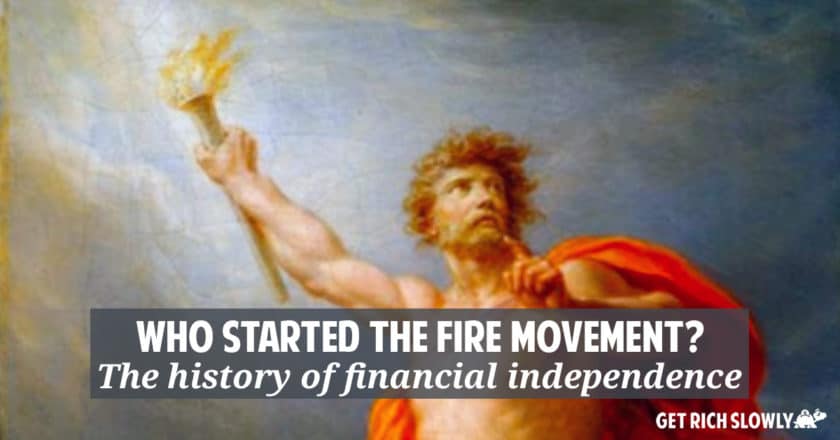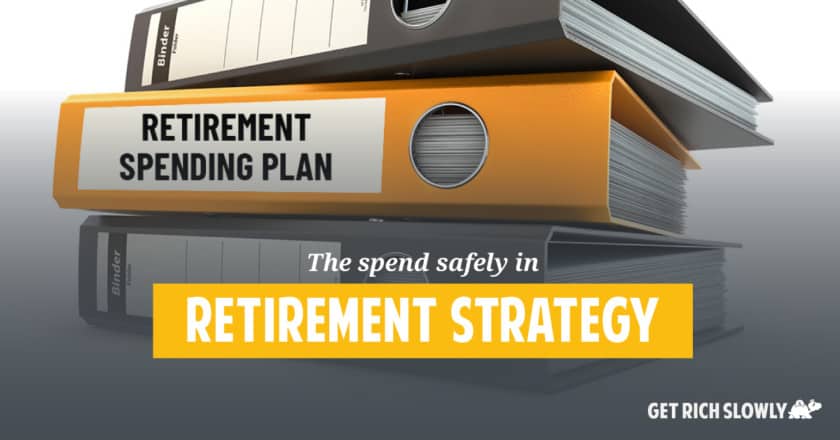Who coined the term FI/RE (financially-independent, retired early)?
It's always fun to unearth some esoteric piece of personal finance history. I know there are only a few nerds out there who care (hello, Grant Sabatier!), but those of us who care really care.
Two years ago, I published an article exploring the history of financial independence in which I noted that the earliest reference I can find to the notion of financial independence comes from an 1872 book called Money and How to Make It by H. L. Reade. And it wasn't until the 1950s that the concept of early retirement (at least in the sense we mean it today) gained traction. But despite my research, I still have questions, such as: What's the source of the modern FIRE movement?
Who Coined the Term FIRE?
Recently at The Retire Early Home Page — a site so old that it existed (and still exists) at the dawn of the web — John P. Greaney answered the question: Who coined the term FIRE?
Drama in real life: Making planned gifts before death
My mother's health has been declining over the past few months, and it's produced a wee bit of year-end financial drama in our family. (The word "drama" is a bit of an exaggeration. Maybe it's produced some year-end financial consternation?)
As long-time readers will recall, my mother has been in assisted living for more than a decade now. She lives a mellow life filled with television, her pet cat, and a regular routine. Because she has cognitive problems, it's difficult for her to communicate. The doctors call her "non-verbal", and they can't explain the cause. She cannot form complete sentences (sometimes two words is tough!), and it seems as if she cannot formulate complex thoughts. It's a mystery to everyone.
Today — at this very moment — my brother is driving my mom to the emergency room. It's her third visit in six weeks, and it's always the same issue: vomiting, dehydration, confusion. During the previous two episodes, a few days of hospital rest helped her, and she returned to the assisted living facility feeling better (and actually able to carry on a basic conversation, like you might have with a two-year-old).
Myths and misconceptions about financial independence and early retirement

As the financial independence and early retirement movement (or FIRE movement, for short) has gained popularity, some myths and misconceptions have sprung up about what it entails. Too many people make assumptions about what the FIRE movement is and what it's made of.
A lot of folks think the FIRE movement is cult-ish. Some think that financial independence and early retirement are only for rich white people. (Or, more specifically, for white men in the tech industry.) Others say that early retirement is only possible with a high income. Or you can only do this if you're so frugal it hurts. And, of course, there are folks like Suze Orman who "hate hate hate" the FIRE movement because they believe you need millions in order to retire — early or otherwise.
I'll be honest. Each objection and complaint about financial independence contains a grain of truth. But each objection and complaint misses the point in some important ways. Continue reading...
We didn’t start the FIRE: The true history of financial independence

I used to be a collector. I collected trading cards. I collected comic books. I collected pins and stickers and mementos of all sorts. I had boxes of things I'd collected but which essentially served no purpose.
I can't say I've shaken the urge to collect entirely, but I have a much better handle on it than I used to. A few years ago, I sold my comic collection and stopped obsessing over them. Today, I collect three things: patches from the countries I visit, pins from national parks, and -- especially -- old books about money.
Collecting old money books is fun. For one, it ties to my work. Plus, there's not a huge demand for money manuals, so there's not a lot of competition to buy them. (Exception: As much as I'd love a copy of Ben Franklin's The Way to Wealth, so would a lot of other people. That one is out of my reach.)
Playing with FIRE, the documentary about financial independence and early retirement

In early October 2016, I flew to New York City to attend Ramit Sethi’s Forefront event, a weekend conference about entrepreneurship and excellence. As I always do when travling, I agreed to meet with a few readers and colleagues while I was in town.
One sunny morning in Madison Square Park, for instance, I sat on a bench and chatted with Travis Shakespeare. "I'm a film and television producer," Travis told me. "But I'm also into the FIRE movement. I just got back from the chautauqua in Ecuador."
The FIRE movement, of course, is all about financial independence and early retirement. And the chautauquas are annual gatherings for FIRE folks who want to dive deep into the subject. (I've now attended four of these myself.) Continue reading...
How to supplement retirement income with a part-time job

Could you pay your mortgage, groceries, rent, insurance, medical expenses, and other bills on $2000/month? If you could, what kind of lifestyle might you lead?
Millions of retirees across America live it every day.
The Social Security Administration reports that 50% of elderly married beneficiaries and 70% of singles rely on Social Security for more than half of their monthly income. Considering that the average Social Security check is around $1361/month, this is a really tough place to be in for so many of these retirees.
Should I stay or should I go? Wrestling with the decision to quit a career

J.D.'s note: In the olden days at Get Rich Slowly, I shared reader stories every Sunday. I haven't done that since I re-purchased the site because nobody sends them to me anymore. But earlier this year, Mike did. I love it. I hope you will too.
Earlier this year, I sent my wife a text message: "On a scale of 1 to 10, how freaked out would you be if I quit my job this afternoon?"
My wife and I had only been married a short while, but she'd known since our second date that I didn't plan to work in my traditional job until normal retirement age. She also knew that I hadn't been very happy at work in recent months.
Early Retirement Extreme: The ten-year update

Today, I'm pleased to present a guest article from one of my favorite money bloggers of all time: Jacob Lund Fisker. Fisker founded Early Retirement Extreme in 2007. It quickly became an influential voice for the nascent FIRE movement. In fact, I think it's fair to say that FIRE wouldn't be what it is today with his work.
Fisker retired from blogging in 2011. Since then, he and I have exchanged long emails on sometimes arcane subjects. Occasionally I ask him for advice. Recently, I asked him if he'd be willing to update people on where he's been and what he's been doing for the past decade. He agreed.
Here, then, is Fisker's story of life after Early Retirement Extreme (and extreme early retirement). Be warned: His story is not short.
The £200 Millionaire: An early retirement story from 1932

J.D.'s Introduction
While reading an obscure book about retiring early to a life at sea -- Voyaging on a Small Income by Annie Hill (1993) -- I discovered a short story from a man named Joseph Weston-Martyr.First published in 1932, The £200 Millionaire reads like "Mr. Money Mustache at Sea". It's fascinating. Because today I start a ten-day Mediterranean cruise, I thought it'd be fun to share this story at Get Rich Slowly.
This is a long story. It contains 8001 words, which is 32 printed pages. I've formatted it for web-based reading (I don't think you want to read a 500-word paragraph on your phone!), plus added images and hyperlinks. Please enjoy it as weekend reading!<
The spend safely in retirement strategy


On the surface, this report's advice seems stupid simple: To optimize retirement income, delay Social Security and make the most of required minimum distributions from tax-advantaged accounts. Isn't this pretty much what most of us plan to do? Maybe so, but I doubt that anyone else has crunched the numbers like this.
Plus, this strategy provides a specific plan for folks who haven't considered how to approach retirement income. As the authors note, most retirees fall into two camps.